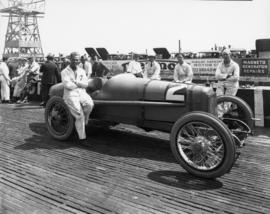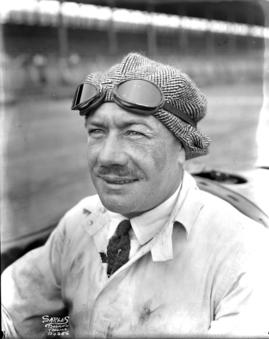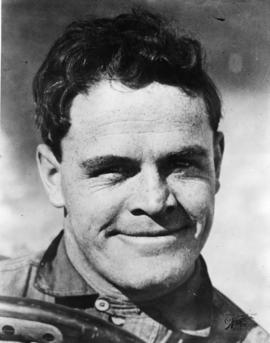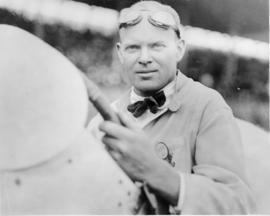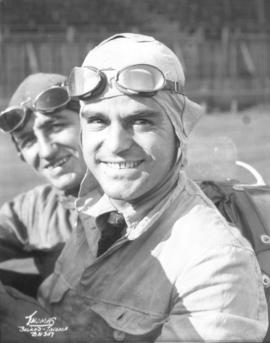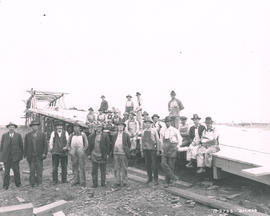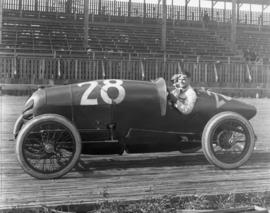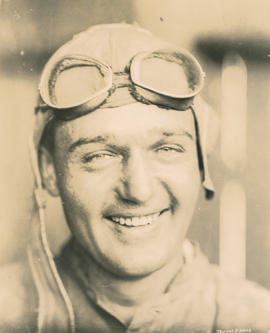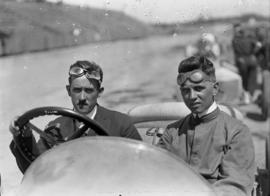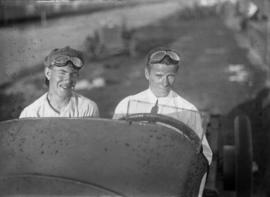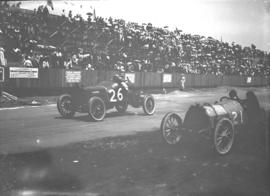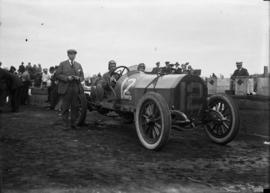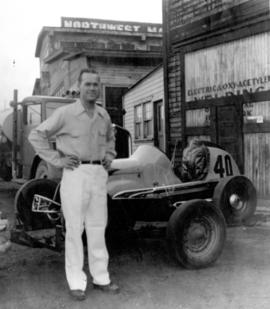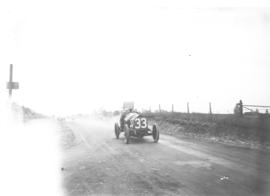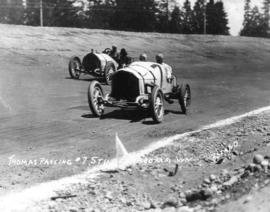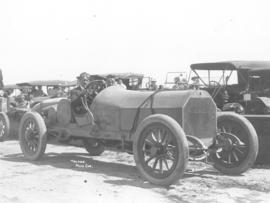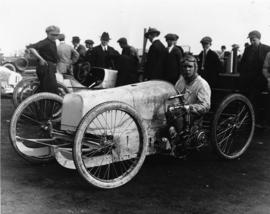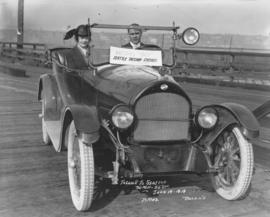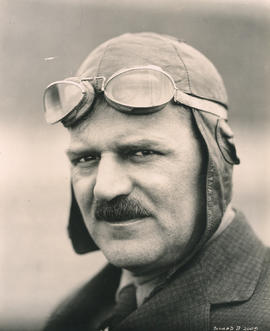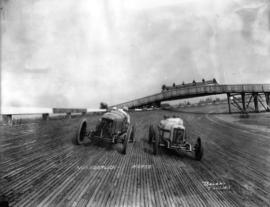- Item
- 1920-07
Part of Marvin Boland Photographs
A confident Ralph DePalma is perched on the back tire of a borrowed Duesenberg parked on the board track of the Tacoma Speedway. Mr. DePalma had come to Tacoma to compete in the July, 1920, 225-mile race along with other famous names including Gaston Chevrolet, Cliff Durant, Tommy Milton and Ralph Mulford. His French Ballot was the only foreign entry in a field crowded with Duesenbergs, Monroes and Frontenacs. Unfortunately his Ballot broke a connecting rod on July 1st and although the Smith Cannery Machine Co. and Western Gear Works of Seattle rushed to make eight connecting rods, the Ballot was not able to be repaired in time. In the spirit of good sportsmanship, Eddie O'Donnell of the Duesenberg team offered Mr. DePalma the use of his ride so that Mr. DePalma would not disappoint the thousands who had come to see him race. Thus, the reason for the Duesenberg shown above with the #2 (number formerly assigned to the Ballot) painted on. Even with the powerful Duesenberg, Mr. DePalma did not win the race as the car broke down before finishing. Tommy Milton, winner of the recent Uniontown, Pennsylvania 225-miler, drove his Duesenberg to a $10,000 payday. (TDL 7-2-20, p. 1-article; TDL 7-6-20, p. 1-results)
DePalma, Ralph; Tacoma Speedway (Lakewood); Racetracks--Lakewood--1920-1930; Automobile racing--Lakewood--1920-1930; Racing automobiles--1920-1930; Duesenberg automobile; Automobile racing drivers;
